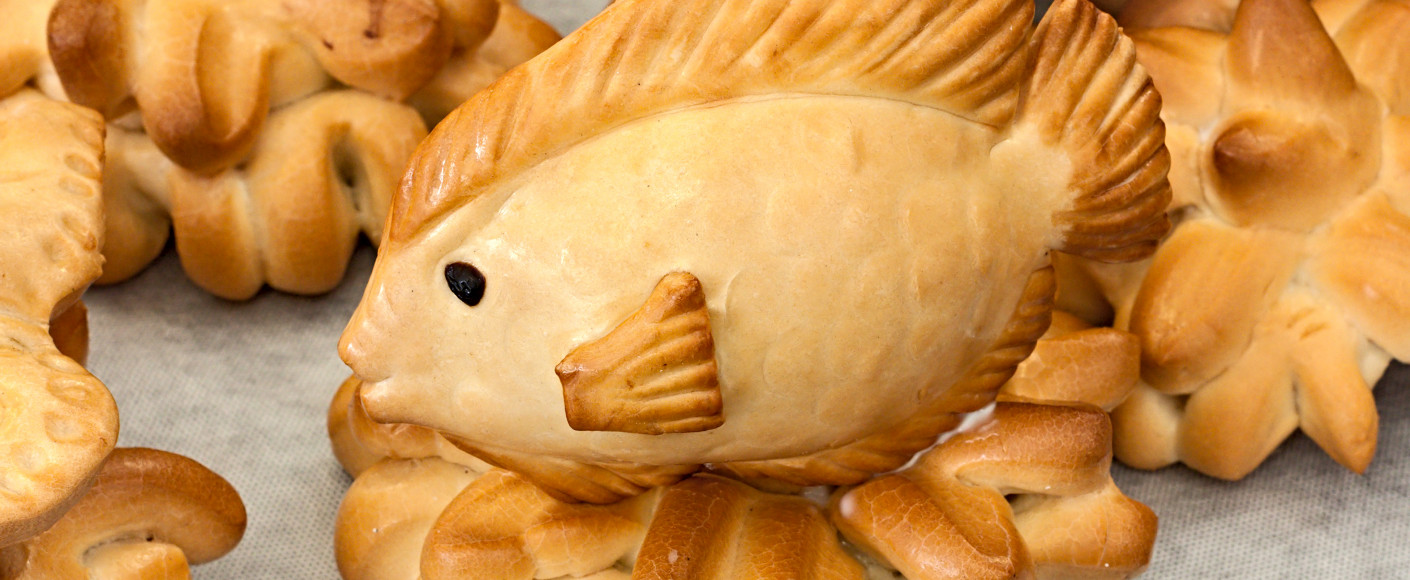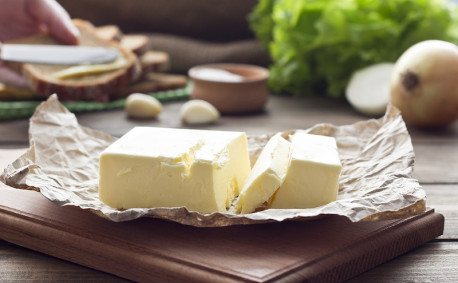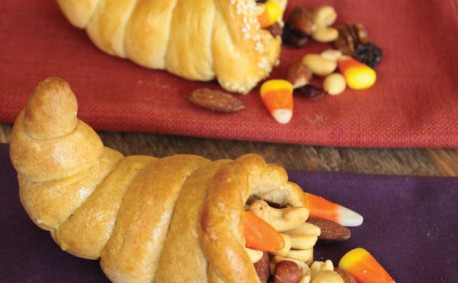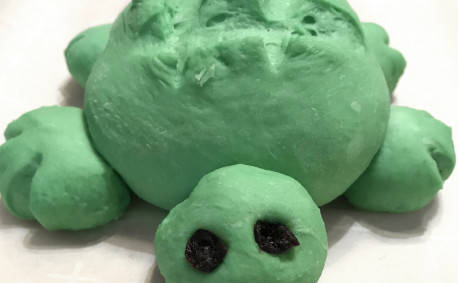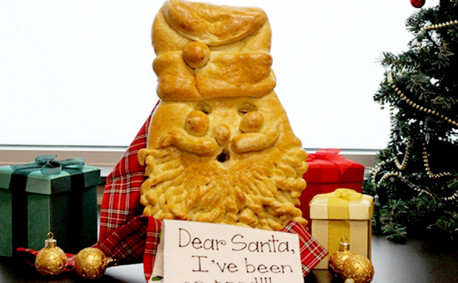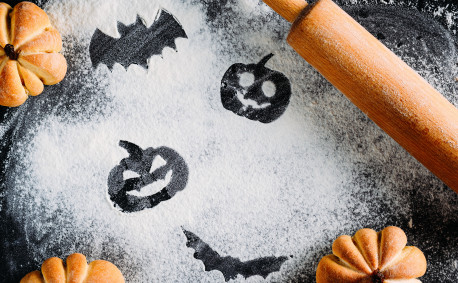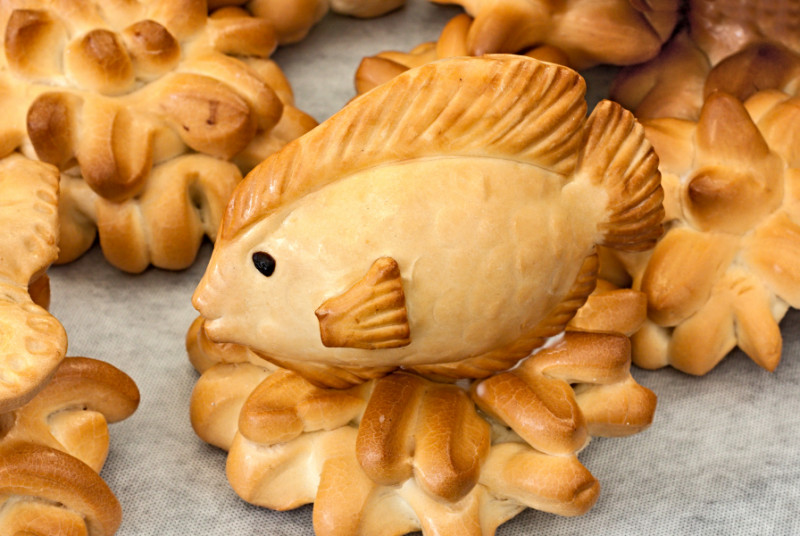A Farm to Fingers Food Challenge
How many parents have told their children “don’t play with your food” over the years? You may have caught yourself uttering those very words as your kiddos listlessly pushed food around a plate or made props out of produce well past the age where that sort of thing is considered adorable.
Well, we’re here to tell you to go ahead and play! That’s right. We’re encouraging folks to get personal with their produce (and dairy and dough and meat). Channel your inner DaVinci and make masterpieces out of meals with our “farm to fingers” food challenge.
Butter Sculpting
Like funnel cakes and pig races, butter sculptures remind us of the state fair. Giant renderings of cows are certainly a favorite, but creativity knows no bounds in this medium where fairy tales, historical figures and even Harry Potter have been featured as unexpected sculptures.
Tips on Working with Butter
Butter is greasy, making it slippery to work with and quite messy. Have plenty of dishwashing liquid and paper towels on hand or go with gloves to keep your hands clean.
A plastic knife is a go-to tool, but keep in mind the serration will show up as a pattern on your butter surface. Your fingerprints can, too, so be careful when shaping that you don’t end up with a rough surface (unless you wear gloves). In fact, if you lean into unusual tools, you just might find some fun creating unusual patterns. Items like wire, forks and straws can be used for carving and will add some interest to the texture.
You’ll probably have a love-hate relationship with heat when working with butter. Too hot and you’ll lose definition. Too cold and it will be difficult to work with. A bit cooler than room temperature should be just about right for a happy middle ground while working with butter. As you work with it, the butter will soften, so strategize accordingly. If your block gets too soft, set your masterpiece in the fridge for a bit to make sure it doesn’t become disfigured.
Butter Sculpture Ideas
We recommend starting small by working within the parameters of a single chunk of butter. Carving from one stick or a one-pound block will be easier because you’ll have a solid structure to start with. Combining more than one stick or slab can get tricky. Try creating:
- A pet or other animal.
- Jack-o-lantern: Lean into fall by making one food out of another.
- Flowers: They’re small and as a bonus you can practice levelling-up your Thanksgiving table-setting game if you master decorative butter touches.
Five Fun Facts About Butter
- Butter sculptures have been a staple at the Kansas State Fair since 1983.
- The road to becoming a pro requires imagination and physical stamina because the sculptures can take more than 100 hours to make and use more than 1,000 pounds of butter.
- It takes about 2 ½ gallons of whole milk to make a pound of butter.
- Butter is usually pale yellow. It can vary from deeper yellow to white depending on the diet and breed of the dairy cows.
- Butter is rich in vitamins A, D, E, K and B12.
SPAM Sculpting
SPAM, Treet, potted meat — no matter what type of canned meat you fancy (or fear), this challenge is a great way to get to know it better. If you’ve ever prepped an emergency food supply, chances are canned meat may have made your kit. These products feature processed meat, spices and other ingredients which can be eaten straight from the can if need be, or cooked (frying is particularly popular). Canned meats also make for a fun medium to carve!
Tips on Working with Canned Meat
Measure twice and cut once because once you slice the SPAM, there’s no going back. Unlike butter, which can be melded back together in a pinch, cutting into canned meats can’t be undone without adhesives. (CheezWhiz, anyone?)
Like with butter, knives are a good tool, but the angles are blunt, making edges appear sharp. It can take a few passes to create rounded edges. Since canned meats are typically very soft, you can experiment with other carving tools here, too.
Canned Meat Sculpture Ideas
Like marble, sculpting in canned meat is all about subtraction. You have to find the negative space to make your sculpture pop. Keep to simpler shapes (at least to start) as you get to know this medium. Try creating:
- Stonehenge: Perfect for beginners.
- Letter blocks: Spell a name or other word with individual blocks or one slab.
- House: The starting shape looks a bit like a building already. Once you get the basics down, you can add details like windows and roof shingles. Move over, gingerbread!
By all means level up once you feel comfortable with SPAM. And, when you’re done, fry up a bit for a family snack.
Five Fun Facts About Canned Meat
- Canned meats have a shelf life of two to five years.
- They can be made of pork or chicken and often include potato starches and grain byproducts.
- SPAM was created in 1937 and rose to global popularity during World War II, when there was a dire need for protein with a long shelf life that could be easily transported. It remains extremely popular in Southeast Asia and has sold more than 7 billion cans worldwide. A troupe of women called “The Hormel Girls” toured the United States in the 1940s to raise awareness of SPAM.
- Armour, which started as a meatpacking company in 1867, makes Treet brand potted meat. The company also produced the first deodorant soap, Dial.
- While nutritional values vary, canned meats are typically high in fat and protein. They may also contain high amounts of sodium.
Dough Sculpting
Dough sculpting can include simpler shaping techniques like twisting or combining smaller items like rolls into a larger tear-and-share design. It can also involve more intricate designs and structural elements. Fans of The National Festival of Breads have seen some incredible examples of all these techniques in entries over the years. (The festival has a helpful bread-shaping guide you can consult as you take on this challenge.)
Tips on Working with Dough
In addition to shaping dough, you can use different varieties to play with color and contrast. If you want to eat your creation (and who wouldn’t?) make sure your dough is fully cooked. This can be tricky as different thicknesses and types of dough will have different cook temperatures and times.
Get playful with tools. A pizza cutter will work better than a knife for precision cutting, but using a knife to slice the top before baking can yield some interesting shapes in the final product.
Branch out and add elements like seeds or egg glazes to create different textures and finishes.
Dough Sculpture Ideas
This challenge is all about molding and building versus carving. Since the shape will change as you bake the dough (some will rise, some will fall), don’t stress about the details. Focus on the overall form. Try making:
- Animals and insects
- Plants
- Abstract rosettes
You can also combine bread baking with mixed media and use fruits and vegetables to create vibrant color (and flavor). You can mix them in or create a design on the surface of your loaf before you bake it.
Five Fun Facts About Dough
- We often think of baking dough to make bread, but it can also be fried, steamed or boiled.
- Americans eat an average of 53 pounds of bread per year.
- When you let dough rise, the process is actually fermentation. Yeast breaks down sugar and creates gas bubbles within the dough.
- Yeast is a fungus.
- Wonder Bread was created in 1921. It was one of the first sliced breads, but loaves were not sliced during World War II.
Mixed-Media Masterpieces
Have you ever played with uneaten parts of a meal, shuffling pieces around until you’ve made a shape? No? Just us? Well, that’s a great starting point for this challenge. What can you make from what’s on your plate? What about preparing a special snack or meal with this challenge in mind?
Depending on what types of food you decide to use, these creations could be three- or two-dimensional.
Tips on Working with Mixed-Media
Really, the sky’s the limit as you create a canvas with your plate. One advantage here is you can have fun with color. You also aren’t limited to the edible portions. Rinds and stems can add decorative touches.
This challenge may also inspire you to create festive theme dinners around certain holidays.
Mixed-Media Sculpture Ideas
You can use elements for a sparse “painting” or create a masterpiece with your entire meal. Try:
- Doing a self-portrait or a portrait on someone else (cartoon characters count!).
- Recreating a work of art.
- Using produce to make a scene from nature.
Post and Share
Don’t forget to share your masterpieces with us on social media. Follow and use the hashtags #farmtofingers #fingerfood #snacksculpture #ksfarmfood to join the fun.

